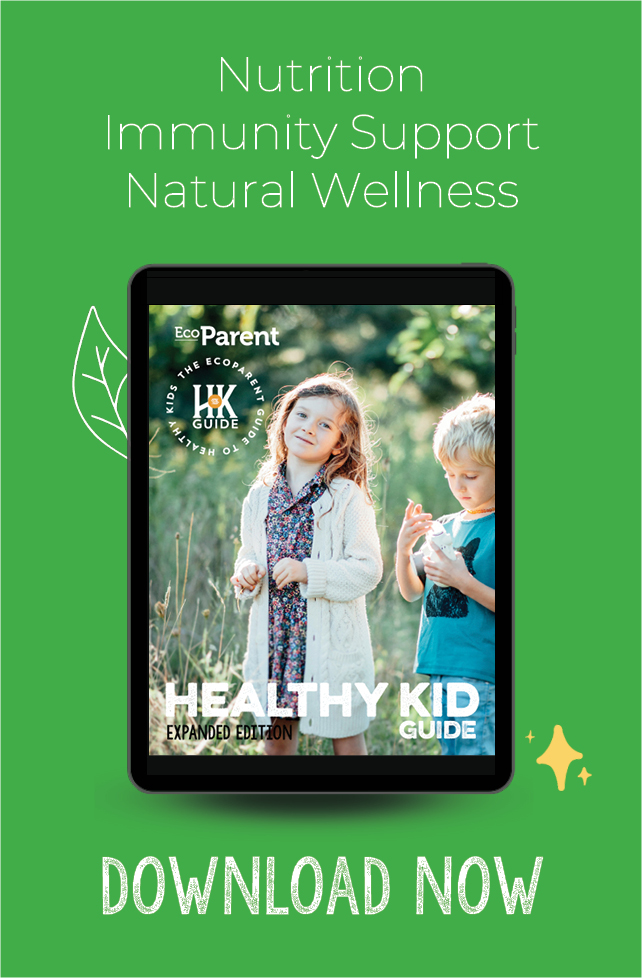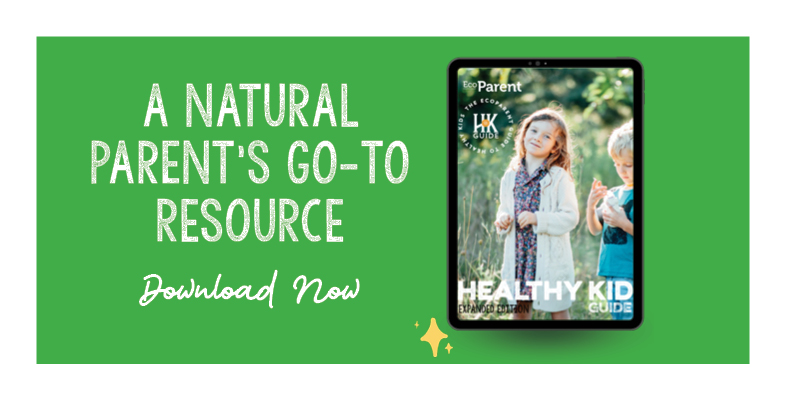If you are a caregiver of a small child, you know that illnesses happen all too frequently. Among those of us at the Pediatric Association of Naturopathic Physicians, we spend a lot of time demythologizing the fever, letting parents know that it is not the enemy and that a fever can actually be a good thing—it’s one of the body’s innate ways of fighting off illness. Believe it or not, a child’s body is already equipped with the skills and tools to fight off most infections they encounter successfully, such as a fever, chills, decreased appetite, and decreased energy.
Outside of fever, some common symptoms caused by a viral infection include cough, runny nose, fatigue, and loose stool. Although it might be challenging to watch your child experience these symptoms, these are protective mechanisms our bodies use to remove and kill viruses. As a child gets older, most of these viral illness exposures are actually helpful for them to build and establish a robust immune system into adulthood.
How Will I Know If an Infection Is Viral or Bacterial?
It can be challenging to determine if an infection is viral or bacterial. In most cases, more alarming signs and symptoms of severe or progressive illness are present with bacterial infections. The chart provided (below) will help you determine when it is okay to manage a fever at home, when to contact your provider, and when to seek emergency services. If a bacterial infection is present, antibiotic treatment may be deemed necessary by your medical provider. Antibiotics will not be helpful in the case of a viral infection, as antibiotics only kill bacteria, not viruses.
What Is a Fever?
A fever is a protective and beneficial response of the body to an infection, whether bacterial or viral. A fever indicates a normal response to that infection in most otherwise healthy children. There is no evidence that a fever worsens the course of an illness or causes long-term neurological complications.1 A fever is defined as a rectal temperature of 100.4°F (38°C)2; however, the degree of the fever does not necessarily correlate with the severity of the infection.6 In fact, a fever of around 102.2°F (39°C) is considered the ideal temperature to fight infections!5,6 A fever at this temperature might be a cause of concern for parents, but we are here to tell you that in most cases, your child is safe with a fever around this temperature as long as other signs of illness are not alarming. Some children commonly run fevers upwards of 104°F (40°C) without cause for concern.8 The natural limit of a fever is 106°F (41.1°C); below this level, there is no negative impact on healthy tissue.8,9
Temperature readings
Taking an accurate temperature at home is critical. Try to take your child’s temperature a few times and always go by the highest reading. A thermometer will never inaccurately give you a high reading, but it can give you inaccurate low readings. Rectal temperature is the most accurate, followed by oral temperature. Ear and forehead thermometers are less accurate but offer acceptable measurements. Armpit measurements are often less accurate, except in newborns, where armpit measurements are seen to be as accurate as rectal.2 Digital thermometers designed for a specific purpose and location are the most reliable. Do not use mercury, pacifier, or strip thermometers.
How Do I Know When to Stay Home, Talk to My Doctor, or Seek Emergency Care?
Managing a fever is mainly dependent on your child’s age and other symptoms and signs of illness they exhibit. Of note, any fever in an infant 3 months or younger is considered an emergency and should be addressed immediately.
It is helpful to know when to seek medical help, versus when you can “watch and wait” and provide symptom relief at home.
- If your child exhibits signs in the yellow column, call your healthcare provider.
- If they show signs in the red column, this may be an emergency.
- If your child’s symptoms are all in the green column, they are likely coping okay; talk to your healthcare provider non-urgently to find the source of the problem and create a plan to help your child feel more comfortable and recover well.
NOTE: Fevers and vaccines— A caretaker does not need to give a fever-reducing drug before a child receives a vaccine, as it may decrease the immune response to the vaccine. Numerous studies show that giving a pain-reliever/fever-reducing agent may impair the immune system's ability to do what it needs to do to build antibodies to the agent the vaccine is trying to intentionally build immunity to.4
Naturopathic and Conventional Fever-Supportive Care
Fever management should be based on the child’s comfort rather than their temperature. The goal is ideally to identify and manage the cause rather than treat the fever itself. Other symptoms your child is experiencing can explain the cause of the fever and the seriousness of the situation. There are a variety of strategies that can be used to manage symptoms and discomfort associated with a fever before reaching for medications.
If your child is showing evidence of being at “low risk,” your healthcare provider has reassured you, or even if your child is actively managed with medications, try the following suggestions to support your little one’s efforts to heal:
- Allow for as much rest as possible to help the body to fight infection. Letting the body conserve energy to fight infection instead of using it for movement, activity, or even school is essential for overcoming illness.
- Hydrate. This is critical for any child with a fever, regardless of the cause, to prevent dehydration. Good options for rehydration support include electrolyte tablets in water or low-sugar electrolyte drinks (avoid sugar-free sweeteners and sugar alcohols), coconut water, chicken broth, vegetable broth, diluted apple juice, real fruit popsicles, and watermelon. Avoiding pure fruit juice, pop, or sports drinks is recommended. Encourage small sips of water frequently, especially if vomiting is present.
- Avoid foods with added sugar which can suppress the efforts of the immune system12,13
- Offer easy-to-digest, warm, hydrating, and nutritious foods like stews, soups, unsweetened applesauce, soups, and broths.
- Try the “magic” warming socks treatment. This hydrotherapy treatment is a simple way to improve blood and lymphatic movement, improving immune cell movement in the body (see below).
“Magic” Socks Warming Treatment
Supplies
- 1 pair of cotton socks
- 1 pair of thick wool or fleece socks
- Towel
- A warm bath or warm foot bath
Directions
- Take a pair of cotton socks and completely soak them with cold tap water. Be sure to wring the socks out thoroughly so they do not drip.
- Place wet socks in the freezer for 10-20 minutes (If you have a child under age 2, skip this step).
- You want to make sure your child is not feeling chilled, so a hot foot or full body bath is helpful. Dry off their feet/body with a dry towel.
- Place the cold, wet socks on their feet. Cover these socks with your thick wool or fleece socks. (For little ones, a fleece-footed onesie works especially well under wool socks.)
- Have your child rest in bed or on a couch covered up with blankets and avoid getting them chilled. Keep the socks on until their body has either warmed them up or dried them. If your child goes to bed, they can sleep in them overnight.
Medication options
Ibuprofen (Advil) and acetaminophen (Tylenol) are both options to reduce fever and pain, but it is ideal to avoid them if possible as they do not aid the body and its disease-fighting process.7,10,11 They are helpful in the event your child is feeling uncomfortable enough that they are unable to sleep, eat, or drink; otherwise, they are not essential to use during a fever, as they do not treat the disease. Please follow the instructions on the packaging and dose according to the weight of your child.
Be mindful that these medications, when dosed appropriately, suppress a fever and pain for about 8 hours. Around this time, when the medication wears off, a child can develop a rebound fever. A rebound fever is when the body spikes a higher fever for a short time and then decreases to a lower temperature. Do not be alarmed when this happens. This is a normal physiological response, as the body has been trying to raise the temperature during the medication and now is “breaking through” that barrier as it wears off.
** Of note: If fever-reducing medication is within a household, please take care to keep it in a childproof cabinet or area to prevent the risk of accidental ingestion.
Finally, remember to limit exposure to others until your child’s temperature has been normal without medication for at least 24 hours. This is especially important for immune-compromised individuals. As a parent, seeing a fever in your child can be alarming. We’re here to reassure you that fevers can be a normal and protective mechanism of our body’s response to infection!

The Pediatric Association of Naturopathic Physicians is a professional medical organization which aims to advance the realm of pediatric medicine. They are a collection of licensed naturopathic doctors with additional training in pediatric medicine. They take a holistic approach by bringing together conventional and naturopathic treatments to optimize the standard of care in pediatric healthcare."
References
- https://publications.aap.org/pediatrics/article/127/3/e20103852/65016/Fever-and-Antipyretic-Use-in-Children
- Whittaker, Catherine. "Paediatric fever: mother and child health." Professional Nursing Today 15, no. 5 (2011): 17-21.
- https://publications.aap.org/pediatriccare/article-abstract/doi/10.1542/aap.ppcqr.396073/1532/Fever?redirectedFrom=fulltext
- Saleh, Ezzeldin, M. Anthony Moody, and Emmanuel B. Walter. "Effect of antipyretic analgesics on immune responses to vaccination." Human vaccines & immunotherapeutics 12, no. 9 (2016): 2391-2402.
- https://www.pnas.org/doi/10.1073/pnas.1803609115
- https://www.ncbi.nlm.nih.gov/pmc/articles/PMC4786079/
- https://www.ncbi.nlm.nih.gov/pmc/articles/PMC3906934/
- https://www.ncbi.nlm.nih.gov/pmc/articles/PMC4944502/
- https://www.ncbi.nlm.nih.gov/pmc/articles/PMC3481471/
- Ryan M, Levy MM. Clinical review: fever in intensive care unit patients. Crit Care 2003;7:221-5
- Mackowiak PA, Ruderman AE, Martin RM, et al. Effects of physiologic variations in temperature on the rate of antibiotic-induced bacterial killing. Am J Clin Pathol 1981;76:57-62.
- https://www.mdpi.com/2072-6643/13/3/886
- https://www.cell.com/cell/fulltext/S0092-8674(22)00992-8







